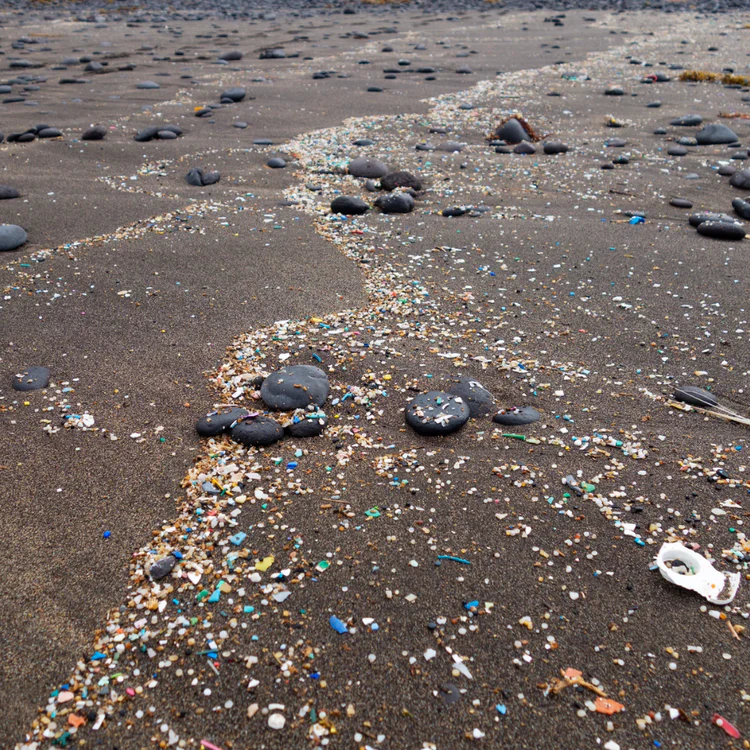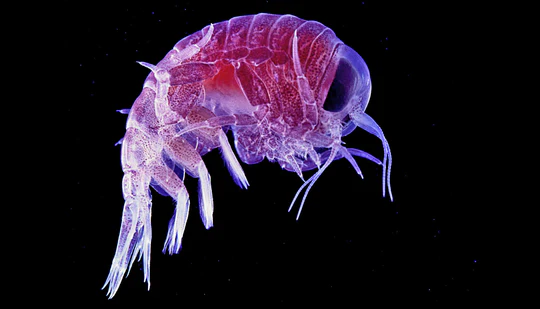The Dangers of Microplastics

Microplastics are tiny pieces of plastic that can measure less than 5mm across. Although they’re too small to see with the naked eye, microplastics are a major pollution problem that is only getting worse.
Scientists have since seen microplastics everywhere they have looked: in deep oceans; in Arctic snow and Antarctic ice; in shellfish, table salt, drinking water and beer; and drifting in the air or falling with rain over mountains
These microplastics come from a variety of sources, including cosmetics, detergents, and even car tires. Once they enter the environment, microplastics
can be ingested by animals or end up in our water supply, where they can pose a serious health risk to humans.
People might be ingesting around the mass of a credit card’s worth of microplastic a year
Children and adults might ingest anywhere from dozens to more than 100,00 microplastic specks each day. Albert Koelmans, an environmental scientist at Wageningen University in the Netherlands, reported this (1). He and his colleagues think that in the worst cases, people might be ingesting around the mass of a credit card’s worth of microplastic a year.
Once microplastics enter the environment, they can be mistaken for food by animals and ingested. Some animals might also eat microplastics directly because they resemble their natural prey. These microplastics can then travel up the food chain to humans. Microplastics are particularly dangerous because of their small size. They can easily enter our tissues and organs. Manufacturers add compounds such asplasticizers, stabilizers and pigments to plastics, and many of these substances are hazardous — for example, interfering with endocrine (hormonal) systems.
Researchers have done the most work on microplastic risks to marine organisms. Zooplankton, for instance, among the smallest marine organisms, grow more slowly and reproduce less successfully in the presence of microplastics. The animals’ eggs are smaller and less likely to hatch (2)

Discovered plastic particles in the human blood in 17 out of 22 test cases
Until recently there were no studies on the effect of microplastics on humans, however a recent explosive study carried out by the Universiteit Amsterdam in the Netherlands discovered plastic particles in the human blood in 17 out of 22 test cases. These tiny particles can become lodged in organs and cause severe problems such as strokes, heart attacks and a myriad of other problems.
They can also be passed from a mother to her child. Half of the samples contained PET plastics from water bottles, a third contained polystyrene and and a quarter contained polyethylene which is thin film carrier bags and packaging overall is made from. Prior to this the only available studies relied on laboratory experiments that exposed cells or human tissues to microplastics, or used animals such as mice or rats. For instance, mice fed large quantities of microplastics showed inflammation in their small intestines (3). Mice exposed to microplastics in two studies had a lowered sperm count (4) and fewer, smaller pups (5) . Other studies in mice have found that microplastics around 5 µm across could stay in the intestines or reach the liver. From this researchers estimate that a person might accumulate several thousand microplastic particles in their body over their lifetime (6).

Researchers projected (7) that the amount of plastic added to existing waste each year — whether carefully disposed of in sealed landfills or strewn across land and sea — could more than double from 188 million tonnes in 2016 to 380 million tonnes in 2040. By then, around 10 million tonnes of this could be in the form of microplastics.
The picture on the left shows where the aggregation of plastic in the oceans around the world is most dense
Conclusion
Microplastics are a growing global problem, and one that we are only just beginning to understand the full extent of. It is clear that microplastics can cause harm to marine life, and there is evidence that they may also pose a risk to human health. While more research is needed to fully understand the potential risks microplastics pose, there are some simple steps we can all take to reduce our exposure, such as using glass or stainless steel containers
for food and avoiding single-use plastic products. If we all work together to reduce our reliance on plastic, we can help make a difference in the fight against microplastics.
And of course we remind you that the technology we use in our garment bags and e-commerce mailers leave behind no microplastics at all in either ocean or on land. Here at Eco garment Bags we are fighting hard to tackle plastic waste within our industry – the fashion industry which is considered the second most polluting industry overall. A simple change to packaging which truly leaves no trace behind is one of the easiest way for a brand to become more sustainable. To read more about this fantastic technology, developed by the UK’s Aquapak Polymers head over to our site www.ecogarmentbags.com or visit www.aquapakpolymers.com
Written By
Sam page
References
1. Nor, N. H. M., Kooi, M., Diepens, N. J. & Koelmans, A. A. Environ. Sci. Technol. 55, 5084–5096 (2021)
2. Horn, D. A., Granek, E. F & Steele, C. L. Limnol. Oceanogr. Lett. 5, 7 8 (2019)
3. Li, B. et al. Chemosphere 244, 125492 (2020)
4. Jin, H. et al. J. Hazard. Mater. 401, 123430 (2021).
5. Park, E.-J. et al. Toxicol. Lett. 324, 75–85 (2020)
6. Nor, N. H. M., Kooi, M., Diepens, N. J. & Koelmans, A. A. Environ. Sci. Technol. 55, 5084–5096 (2021).
7. Lau, W. W. Y. et al. Science 369, 1455–1461 (2020)

